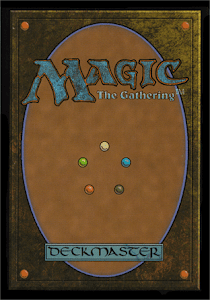The first thing to keep in mind is that this obviously isn't going to result in a competitive build. You're going to be making decisions that favor certain cards based solely on the fact that they promote the creature type of your choice, so as long as you stay within the casual spirit, you should have a good time.
Onto the actual deckbuilding process:
First, you'll want to do a quick search for any cards with your chosen creature type in their game text (MagicCards.info is my engine of choice). You might find some cards that give you tokens of your creature type, or best case scenario you'll find something you can build around and that'll help tie everything together.
Let's take Plants as an example. Khalni Garden is something we'll probably want to include, but the real star here is Avenger of Zendikar. This card gives our deck purpose; we've got a solid end game that can potentially make an army of huge plants.
Before blindly searching for all available plants, let's try to hammer the deck's direction home a little bit. The Avenger obviously loves lands, moreso because of his excessive casting cost. A search of all Plant creatures that include "Land" in their game text turns up a few results, most notably Vinelasher Kudzu.
Now we're onto something: we can put together a basic infrastructure that tutors lands into play, making our turn-two Vinelasher more powerful while ramping towards the Avenger. Even late-game land tutors will allow us to pump our board up.
With this direction, we can start filling in the deck with other creatures of the chosen type that don't necessarily have anything to do with the overall theme. Granted, Plants won't give you any outright powerhouses, but since we know we'll be tutoring lands into play we can afford to splash other colors into the mix. That gives us access to cards like Dreg Mangler, Vigean Hydropon, Phytohydra,and Vulturous Zombie.
Admittedly, we've struck somewhat unexpected gold with the Plant theme, in that we've found a synergistic element that allows us to tie the whole deck together. Many creature types won't have that benefit, and it'll be up to extra "generic tribal" cards to unite the tribe as a whole. You can take your pick: Brass Herald, Adaptive Automaton, Coat of Arms, Door of Destinies, and Obelisk of Urd all help boost your creatures, while cards like (the oft-overlooked) Cryptic Gateway, Urza's Incubator, and Belbe's Portal help you get your creatures in play.
Changeling creatures can also help tie everything together, since they're sporting every creature type (including the one you chose for your deck). Mirror Entity, for example, is a boon in my WUG Birds deck, turning all my 1/1 flyers into huge evasive threats, all the while technically being a bird himself.
For some creature types (like my Hellion tribal deck, for example, which I'll be posting in the coming week), you might find yourself including a majority of creatures that don't sport your chosen type, but that eventually develop into a token-heavy endgame. It's up to you to decide just how dedicated to the theme you want to be.
Plants
4x Slitherhead
2x Gatecreeper Vine
4x Vinelasher Kudzu
3x Dreg Mangler
2x Vigean Hydropon
2x Tree of Redemption
3x Vulturous Zombie
2x Phytohydra
4x Avenger of Zendikar
2x Genesis Hydra
Land Fetch
4x Font of Fertility
2x Khalni Heart Expedition
2x Harrow
4x Slitherhead
2x Gatecreeper Vine
4x Vinelasher Kudzu
3x Dreg Mangler
2x Vigean Hydropon
2x Tree of Redemption
3x Vulturous Zombie
2x Phytohydra
4x Avenger of Zendikar
2x Genesis Hydra
Land Fetch
4x Font of Fertility
2x Khalni Heart Expedition
2x Harrow
+1/+1 Counters
4x Hardened Scales
2x Doubling Season
3x Mutant's Prey
2x Retribution of the Ancients
Lands
4x Khalni Garden
2x Llanowar Reborn
2x Oran-Rief, the Vastwood
4x Evolving Wilds
(13 other lands to taste)
4x Hardened Scales
2x Doubling Season
3x Mutant's Prey
2x Retribution of the Ancients
Lands
4x Khalni Garden
2x Llanowar Reborn
2x Oran-Rief, the Vastwood
4x Evolving Wilds
(13 other lands to taste)

I'll be posting a few other off-brand tribal decks that I've built in the coming week, including my notorious (in my play group, anyway) Horror deck, which has zero tribal synergy but still somehow manages to be thematic, cohesive, and competitive.
Here's a list of tribal decks that I'll be updating as I post them:
- RG Hellions
- WURG Changelings
- WUBRG Commander Elementals
- Monoblue Djinns
- Monoblack Clerics
- Monoblack Horrors
- Monogreen Wolves
No comments:
Post a Comment